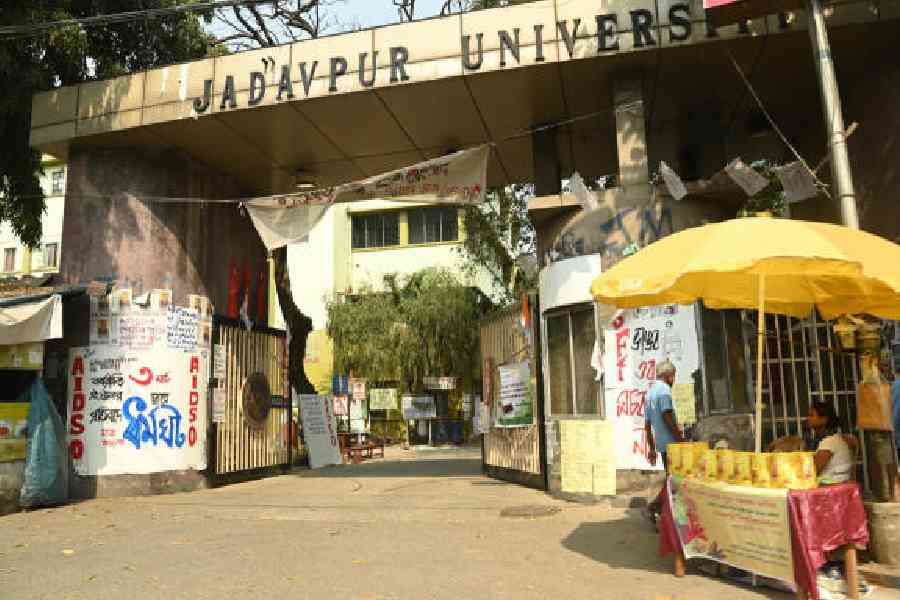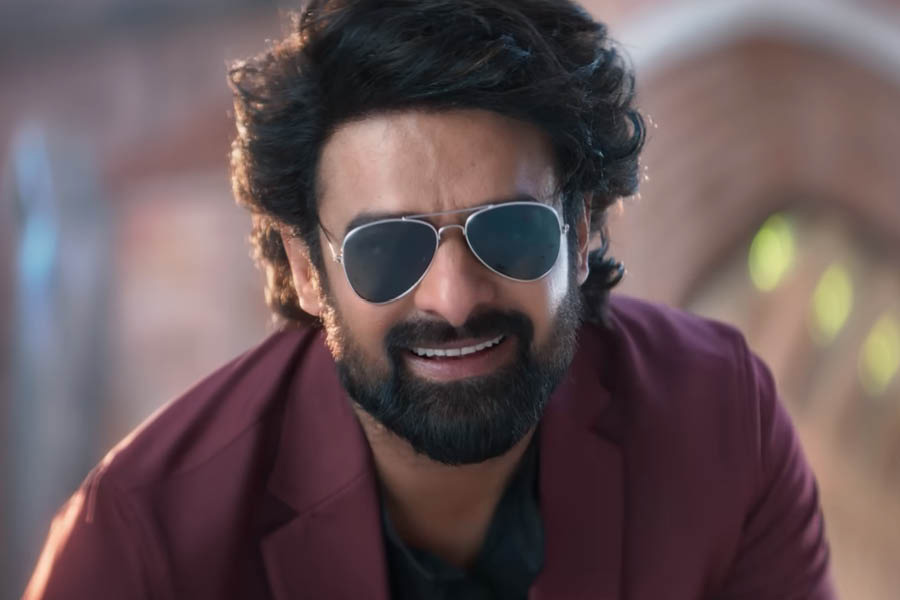Gaya Dhar Nayak. Does the name ring a bell? I am sure not. Tarak Dutta? Again, unless you are an incorrigible Bengali film buff, most likely not. Ritwick Chakraborty? Ah! Now we are getting somewhere. Gaya Dhar Nayak is a Foley artist. Tarak Dutta, played with a rare empathy by Ritwick, is his cinematic representation in an exceptional ode to, as the film’s credit titles say, ‘all the technicians who never get the recognition, yet without whose efforts a film would be a mere audio-visual exercise’.
Shabdo (2012). Probably one of the most influential films emerging out of Bengal in the last 20 years. By arguably ‘the’ most important filmmaker of our time. Kaushik Ganguly. As filmmaker Suman Ghosh says, ‘After Rituparno Ghosh, Kaushik Ganguly has probably been the most influential filmmaker in Bengal. He has carried forward the legacy of Rituparno Ghosh in a number of aesthetically refined films. What I find intriguing about him is how consistently his films portray the marginalised. Say, Chhotoder Chhobi or Nagarkirtan. Even Shabdo – the marginalised of the film industry. Yes, Mrinal Sen and others have done it too. But that was another era. In this day and age, to consistently put forward the subaltern as protagonist says a lot about what he has brought to cinema. He also has very quirky ideas. I cannot recall any other filmmaker today who has this. It’s almost a signature of his body of work. His Nagarkirtan is a masterpiece. I also love some of his other films like Cinemawala, Bishorjon and Arekti Premer Golpo. He has contributed immensely to Bengali cinema.’
In a career spanning over 20 years, this teacher-turned-filmmaker has made 24 feature films across genres. One defining trait of his oeuvre is the variety — it’s impossible to pigeonhole Ganguly to a particular kind of cinema. Yes, there are certain themes and tropes that recur in his work. There are the early ensemble pieces, Laptop and Khaad, that explore human fallacies through interconnected stories and characters. Marginalised people we normally don’t have as protagonists in our films. Contentious subjects that make us uncomfortable and hence are seldom part of our cinematic narratives.
Also running across his oeuvre right from his TV days (Ushno-tar Jonyo, dealing with lesbianism) to Shunyo E Buke to the landmark Arekti Premer Golpo and Nagarkirtan is a searing exploration of various aspects of sexuality. Even in a relatively lesser-known film like Laptop, there is a brilliant scene between Partha (Kaushik Ganguly), a visually challenged writer, and Subha (Ananya Chatterjee), who works for him as a typist. Subha is in her undergarments, ironing her clothes that have got wet in the rain. He enters the room. Startled, she pulls the sari across her breast, then relaxes. He is blind. However, in a later sequence, he dictates his novel to Subha, describing a woman’s breasts. It is with somewhat of a shock that she realises that he has a vision beyond mere sight. One sequence that gives an insight into the director’s understanding of physical disability, the way we approach the human body, and the psychology of a film’s characters.
There is also the penchant for a climactic sucker punch that leaves you gasping. And an abiding interest in examining aspects of cinema. There’s also the touching connect with the Bangal dialect sprinkled across characters in films like Laptop, Khaad and in his finest moment as an actor, Bishorjon and Bijoya. Which brings us to the ‘actor’ Kaushik Ganguly.
The director has mentioned in an interview: “While growing up, I realised that I was pretty ordinary-looking. Also, because of an accident in my childhood, I developed a squint in my right eye.” (Witness how he uses that as a unique plot resolution device in Shabdo.) “Today the scenario has changed so much that I get offers for playing the main protagonist. My old wish of becoming an actor has started to come true.” His career as an actor is deserving of a feature of its own.
Shabdo (2012)
A drunk man sways up the rickety stairs to his room, throws away an empty bottle, bangs on the door, flings it open, proceeds to beat up his wife and throw things around. As we watch the film’s opening sequence, we realise there is something not quite right about the way it plays out. Then we see the sound engineer Dibyendu (played with admirable restraint by Srijit Mukherji) demonstrate what: the contribution a Foley artist makes to a scene.
As played by Ritwick Chakraborty, Tarak Dutta is obsessed with creating ambient sound for films to the extent that he slowly loses his grip on the real world. A psychiatrist (Churni Ganguly) has her hands full trying to get Tarak to reconnect with the world around him, before eventually raising the question of whether Tarak is ‘abnormal’ only because he has mastered the art of ‘cutting out the crap’ — is there anything out there worth listening to?
While its incredible visual and aural passages are too many to describe here, suffice it to say this is one of the best works in cinema dealing with cinema.
Apur Panchali (2013) / Cinemawala (2016)
What do Enzo Staiola, Subir Banerjee, Henry Thomas and Jackie Coogan have in common? All actors who starred in one classic film as a child and are to date remembered only for that. Of these Subir Banerjee stands out for never acting in another film, after his stunning debut in Satyajit Ray’s Pather Panchali. He is the subject of Kaushik Ganguly’s ode to one of the greatest child performers in the history of cinema, a fascinating portrait of a reclusive and embittered man. Expertly alternating between the older Subir (Ardhendu Banerjee) and the younger one (Parambrata Chattopadhyay), seamlessly weaving colour and black-and-white to demarcate the present from the past, and making terrific use of footage from Ray’s Apu Trilogy to draw parallels between Bibhutibhushan’s Apu and the actor who played him in Pather Panchali, the film gives us a wonderful slice of cinema history.
If Apur Panchali offers a peek into the life of a child actor who has faded into oblivion, Cinemawala is Ganguly’s haunting eulogy for the single-screen cinema, a mournful dirge to celluloid, couched as a battle between two generations. Pranabendu (Paran Bandyopadhyay) owns a cinema hall that lies decrepit with the advent of digital technology. With his son Prakash (Parambrata Chattopadhyay) dealing in pirated CDs and DVDs of new films, the battle lines between the two are clearly drawn. Leading to the heart-rending climax where the father sets the theatre ablaze and ‘walks’ over to the ‘other side’ of the screen. Brilliantly realised by the filmmaker and marked by a total absence of sentimentality, this is a moving ode to the romance of the big screen.
Chhotoder Chhobi (2015)
Imagine a mainstream filmmaker – and Kaushik Ganguly is as mainstream as they come – venturing, nay daring, to make an entire feature film on the life of dwarfs. With none of the special effects chicanery of Appu Raja (1989) and Zero (2018), which had Kamal Haasan and Shah Rukh Khan as ‘dwarfs’ aided by SFX. In a masterstroke that not only lends the film its verisimilitude but also gives it integrity and dignity, Ganguly casts Dulal Sarkar and Deblina Roy, both short-statured in real life, in the lead roles. Again eschewing all sentimentality that would have sunk a subject like this, the director brings to the fore not only the general casual humiliation dwarfs are subject to – ‘Give him a half-ticket,’ a man sniggers at a train counter – but the more nuanced ones, the look, the smiles they elicit.
At the same time, the film is a tough and uncompromising love story leavened by moments that cannot but fail to move without ever degenerating into something schmaltzy. Consider, for example, the sequence in which Soma (Deblina) realises that Khoka (Dulal) has helped her monetarily by mortgaging his mother’s necklace. She arrives at his place for an explanation – she is unwilling to accept his ‘charity’. What follows are some of the finest moments of contemporary Bengali cinema. Again a spellbinding visual and aural endeavour, this is the work of a director supremely confident of his material and at the top of his game.
Bishorjon (2016) / Bijoya (2019)
Bishorjon and Bijoya are Kaushik Ganguly’s love letter to ‘Epar Bangla Opar Bangla’, and together constitute his tenderest works, a love story that has few equals in Bengali cinema. An Indian Muslim and a Hindu Bangladeshi caught in the crosscurrents of passion and history. If in Bishorjon, it’s an Indian Muslim who is looked after by Bangladeshi Hindus, in Bijoya, the tables are turned; if in the former, Naser is an ‘illegal’ Muslim in an Islamic country, in the latter, it’s three Hindus who enter India without proper papers – and it is these little ironies that make the two films so engaging. It’s a rare sequel that measures up to an acclaimed predecessor and it takes an intrepid filmmaker to attempt one to a film that scaled the heights that Bishorjon did. Bijoya, picking up the narrative a few years from where Bishorjon left off, does that with aplomb.
The facets that make Bishorjon such a riveting watch – an array of splendid performances (Jaya Ahsan, Lama Halder and Abir Chatterjee), dialogues that sparkle with wit, and a superlative musical score that makes impeccable use of the finest Bangla folk songs (courtesy the late Kalika Prasad, an exponent and connoisseur of the form) – are all on display in Bijoya too. And in Ganesh Mandal, Ganguly created and performed one of the most memorable characters of Bengali cinema.
Nagarkirtan (2017) / Arekti Premer Golpo (2010) / Shunyo E Buke (2005)
Nagarkirtan’s place as a classic in the annals of Indian cinema is well established. It is not only by far the finest exposition of gender and sexuality in Indian cinema, it is at the same time a sensual and utterly unconventional love story like no other. Riddhi Sen’s performance is now ranked among the best ever in Indian cinema and is backed by an equally mesmerising Ritwick Chakraborty. There is little to add to the encomiums that have come its way. Except to reiterate that it’s not often that one comes across a film that makes you flinch from a scene unfolding before you. As Nagarkirtan hurtles towards its harrowing climax – over three sequences so powerful they are bound to shake you to the core – I find myself almost unwittingly averting my eyes from the screen, hoping against hope that there is some way one could rewind the last half-hour for a different denouement, one that would provide its protagonists a more hopeful alternative, reinforcing your faith in the human condition. But of course, then Nagarkirtan would not be the film it is – unflinching, uncompromising, unforgettable.
But even before Nagarkirtan, Ganguly demonstrated his skill at portraying unconventional sexual mores with Shunyo E Buke and Arekti Premer Golpo.
The former, relatively unknown and sadly unheralded, epitomises for me the best of Kaushik Ganguly. Give me another mainstream filmmaker, making only his second film, daring to address the subject of a woman dealing with being flat-chested. Soumitra (Koushik Sen), a sculptor who specialises in sculpting voluptuous female bodies, falls in love with Teesta (they meet in Khajuraho, that paean to the female body of every man’s fantasy, which sets up the film nicely). Following a short courtship, they marry. On the night of their marriage, he discovers that she is flat chested. Feeling cheated and betrayed (‘Why didn’t you tell me before we were married?’ he asks), he is unable to mask his anger and hatred for what he considers an unforgiving deformity in a woman.
As Teesta, Churni Ganguly stands out with what is possibly her finest moment in cinema – fragile, hurt, debased. She almost finds herself apologising to begin with, ‘It’s flat. It didn’t develop… (but) I am not just my breasts’ before standing up to the man’s atrocious views on the perfect woman. A stinging indictment of our preoccupation with the female body – ‘is a woman responsible for a man’s fantasy’, ‘would a woman ask a man to unzip before they are married to ensure that things measure to size’, ‘why are men so obsessed with boobs’ are some questions the film puts forward in as many words – the director pulls no punches in highlighting what a character describes in the film as a legacy of ‘male perversion’.
‘Men are one category. Women are a second category. We are a third,’ says Abhiroop (Rituparno Ghosh in a performance of a lifetime) in Arekti Premer Golpo. Kaushik Ganguly uses the trope of a non-binary filmmaker making a documentary on Chapal Bhaduri aka Chapal Rani, a legend of Bengali jatra known for playing female roles, for his riveting statement on gender, sexuality and the trauma, ostracisation and casual humiliation that is their lot. (‘Can you come in plain clothes?’ A member of the film unit asks Abhiroop, hinting at the director’s ‘outlandish’ sartorial choices.)
Rituparno Ghosh playing Abhiroop lends the film another edge as does the structure of the film within a film, which enables the director to comment on the ownership of a creative venture. Whose is the film – the subject or the maker? As Abhiroop, who is in a relationship with the film’s bisexual cinematographer Basu (a superb Indraneil Sengupta), dons the makeup to play Chapal in the documentary, there is a delectable scene where exasperated by Chapal Bhaduri’s demand for more money, Abhiroop says, ‘I can’t handle the man.’
The film brims over with similar nuanced takes. In a naked moment, Chapal Bhaduri tells Abhiroop: ‘There would have been no problems if only I could think of myself as a man.’ And in the film’s climactic moments, as Basu’s wife shows remarkable equanimity in reconciling to her husband’s relationship with Abhiroop, the latter asks: ‘Would you have reacted the same way if I were a woman?’
Ganguly also makes the significant decision of casting each of his principal characters – Abhiroop, Basu, Basu’s wife Rani (Churni Ganguly), Abhiroop’s admirer Uday (Jisshu Sengupta) and Abhiroop’s film assistant Momo (Raima Sen) – in dual roles for the film within the film. Basu becomes Kumar, the man Chapal is in love with; Uday morphs into Tushar with whom Chapal has a relationship; Gopa (Rani’s alter-ego) fills in as Kumar’s sickly wife, while Momo appears as the sultry seductress who woos Kumar.
It is a dazzling tour de force that underlines the fluidity of gender roles running as an undercurrent through the film, and reminded me of the casting choice of Karl Reisz’s The French Lieutenant’s Woman. The nuances and complexities of Ganguly’s bravura telling make Arekti Premer Golpo one of the most important Indian films dealing with LGBTQ themes.
(Shantanu Ray Chaudhuri is a film and music buff, editor, publisher, film critic and writer)











